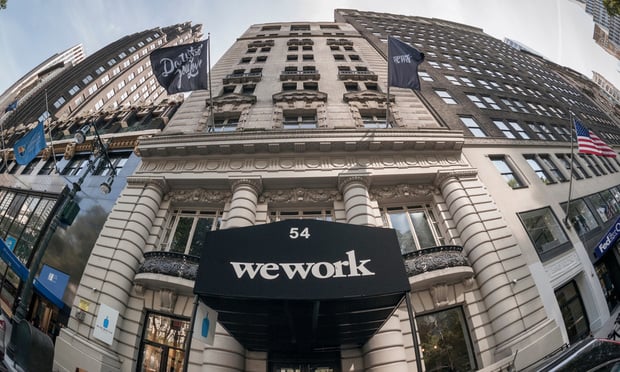Products You May Like
LOS ANGELES—Boston Fed President Eric Rosengren worries about the impact co-working office space could have on the commercial real estate sector and is not reticent about his opinion.
Three weeks ago, he told the audience at an event in New York City that evolving market models, along with low interest rates, are creating a new type of potential financial stability risk in commercial real estate. “One such market model is the development of co-working spaces in many major urban office markets.”
He repeated his concerns to the Wall Street Journal more recently, noting that landlords offer long-term leases to co-working firms, which then spend money to build out the space and rent it on a short-term basis. “My concern is basically structural,” Rosengren told the WSJ. “You’re getting longer-term leases and then you’re renting out the space short-term. So you have an asset-liability-mix problem.”
There have been other critics of the model, which received a significant PR hit with the shelving of WeWork’s initial public offering amid investor concerns and incomplete data in the company’s prospectus.
On the other side there are the advocates of the model, such as CBRE (and indeed most of the CRE industry).
CBRE sought to debunk some of these critics’ theories in a newly-released research report. “CBRE believes that the structural shift to flexibility is here to stay and that real estate markets are not threatened by it,” it said in its report.
According to the company, some facts supporting why flexible office space is a durable trend in the real estate market include:
- Penetration levels are modest. Under 2% of total US office inventory is dedicated to flexible office space and there are only a handful of submarkets that have more than 5 million square feet of total office inventory with a flex-penetration rate of 5% or more.
- The operator base is diversified. Approximately one-third of the flexible office space in the US is provided by WeWork. Nine other operators account for 35% of total flexible office space. The rest (32%) is scattered across 690 more operators.
- Office demand remains strong and broad-based. Over the past year, traditional (non-flex-operator) tenants have leased, on average, 55 million square feet per quarter. Flexible office space accounted for only 6.5% of all leasing activity nationally in H1 2019, compared with 26% of leasing activity directly to technology companies.
- Landlords have been conservative in leasing to flexible operators. In Manhattan, the 10 largest landlords on average have less than 2% of their portfolio leased to flexible space operators and none of the top-10 landlords has more than 5% exposure.
- The demand is clear. Market data provider Statista estimates that more than 1 million people in the U.S. will work out of flexible office space by 2022. There is enough demand to meet the existing supply of flexible office space and CBRE sees that continuing.
As with any transformational phenomenon, the flexible space road is not smooth, CBRE concludes. “The short term could be a tumultuous time for flexible office space, but landlords, investors and lenders will become more educated over time. This wisdom of experience will eventually create a flexible space model that fits the needs of all parties, most importantly the consumer.”
